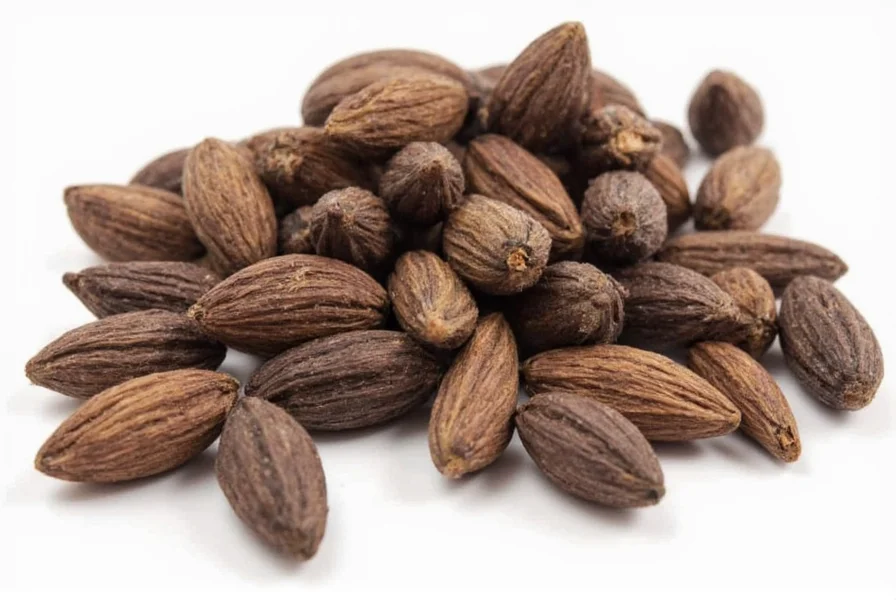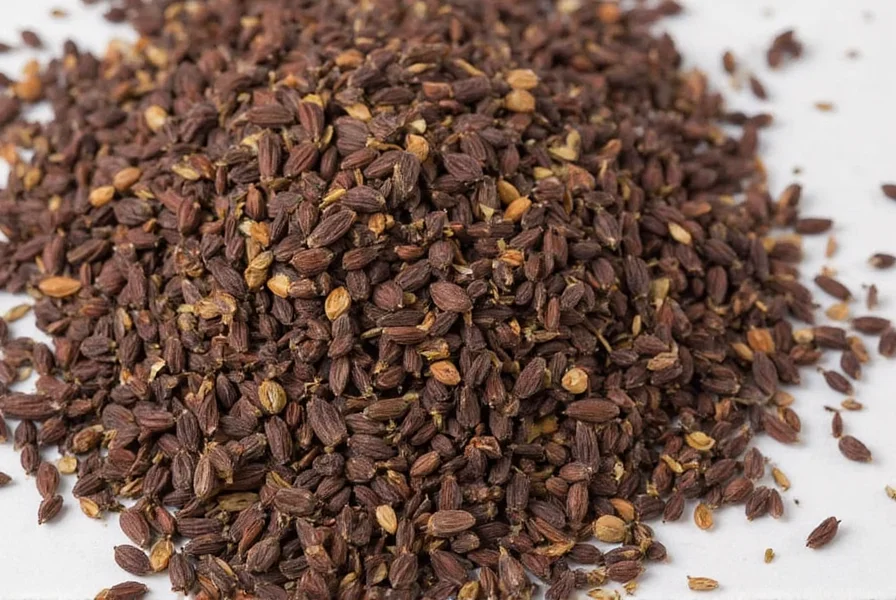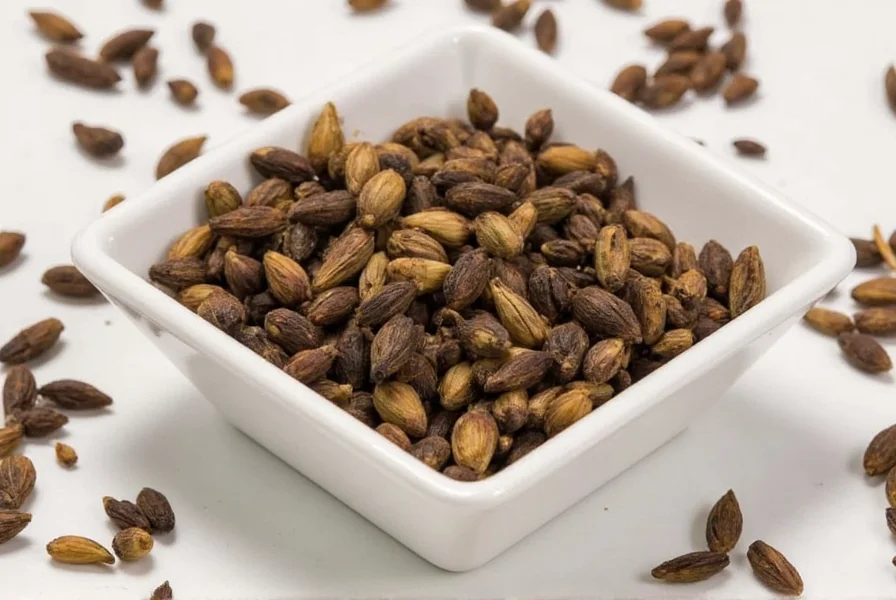When exploring the world of spices, few offer the dramatic contrast between black and green cardamom varieties. Black cardamom delivers an intense, smoky aroma that transforms hearty dishes with its earthy complexity. This distinctive profile makes it indispensable in traditional recipes where depth matters more than delicate sweetness.
What Exactly Is Black Cardamom?
Botanically classified as Amomum subulatum (or sometimes Amomum costatum), black cardamom grows wild in the mountainous regions of Nepal, Bhutan, and India's Sikkim region. The pods measure 2-3 centimeters long—significantly larger than their green counterparts—and feature a rough, dark brown exterior. Harvesters traditionally dry these pods over open fires, creating the characteristic smoky essence that defines this spice's culinary identity.

Black Cardamom vs Green Cardamom: Key Differences
Understanding the distinction between these two cardamom varieties prevents recipe disasters. While both belong to the Zingiberaceae family, they're different species with unique applications. The following comparison clarifies their culinary roles:
| Characteristic | Black Cardamom | Green Cardamom |
|---|---|---|
| Botanical Name | Amomum subulatum | Elettaria cardamomum |
| Flavor Profile | Smoky, camphorous, earthy | Citrusy, floral, sweet |
| Primary Use | Savory dishes | Sweet and savory dishes |
| Pod Size | 2-3 cm, rough texture | 1-1.5 cm, smooth texture |
| Drying Method | Smoke-dried | Air-dried or bleached |
Culinary Applications of Black Cardamom
Chefs value black cardamom for its ability to add complexity to slow-cooked dishes. When using whole pods in recipes like biryani or pho broth, the spice imparts subtle smokiness without overwhelming other ingredients. The robust flavor withstands long cooking times, making it ideal for:
- Indian meat curries and stews (particularly Kashmiri and Punjabi cuisine)
- Nepalese sel roti and other traditional breads
- Vietnamese pho broth for depth of flavor
- Chinese five-spice powder variations
- Slow-cooked bean and lentil dishes
For optimal results, add whole pods early in the cooking process to allow flavors to infuse gradually. Remove before serving since the tough outer shell remains unpleasantly chewy. Ground black cardamom works better in spice rubs or marinades where texture isn't a concern.
Proper Storage and Preparation Techniques
Maintaining black cardamom's intense aroma requires careful storage. Keep whole pods in an airtight container away from light and heat. Properly stored, they retain peak flavor for 12-18 months—significantly longer than ground spice, which loses potency within 6 months.
When preparing black cardamom, most cooks use the entire pod rather than extracting seeds. The smoky compounds permeate the whole structure during traditional drying. For stronger flavor infusion, lightly crush pods before adding to dishes. This technique works particularly well in rice pilafs where you want the smokiness to permeate without visible spice pieces.

Substitutes When Black Cardamom Isn't Available
Finding authentic black cardamom can challenge home cooks outside South Asia. While no perfect substitute exists, these alternatives work in a pinch:
- Smoked paprika + regular cardamom: Combine 1/4 tsp smoked paprika with 1/2 tsp green cardamom for approximate smoky-sweet balance
- Lavender + star anise: Creates a floral-earthy profile suitable for stews (use sparingly)
- Chipotle powder + cardamom: Provides smokiness with complementary heat
Remember that black cardamom's unique character comes from both its botanical properties and traditional processing methods. These substitutes merely approximate aspects of its complex profile.
Traditional Medicinal Uses and Modern Research
Traditional Ayurvedic and Chinese medicine systems have used black cardamom for centuries to address respiratory and digestive issues. Modern studies show promising results regarding its antioxidant properties, though research remains preliminary. The spice contains cineole and limonene compounds that may support respiratory health when consumed in culinary amounts.
Unlike medicinal supplements, culinary use of black cardamom presents minimal risk when consumed normally. However, pregnant women should consult healthcare providers before consuming large medicinal quantities, as with most potent spices.
Where to Find Quality Black Cardamom
Seek out South Asian or specialty spice markets for the freshest black cardamom. Look for plump, dark brown pods with visible smoke residue—avoid pale or dusty specimens which indicate age. Premium varieties from Sikkim or Darjeeling command higher prices but deliver superior flavor intensity. When buying online, check harvest dates and storage conditions to ensure maximum freshness upon arrival.
FAQ
Can I substitute black cardamom for green cardamom in recipes?
No, black and green cardamom have fundamentally different flavor profiles. Black cardamom's smoky intensity overwhelms delicate desserts where green cardamom shines. Use black cardamom only in savory dishes specifically calling for it, or create a substitute blend using smoked paprika with green cardamom.
Why does my black cardamom taste burnt?
Traditional black cardamom undergoes smoke-drying, creating natural smokiness. However, excessively burnt flavor indicates either over-roasted pods or using too much. Start with one pod per pound of ingredients and adjust in future batches. Fresh pods should have complex smokiness, not harsh bitterness.
How do I use black cardamom in rice dishes?
Add one whole black cardamom pod to the cooking water when preparing rice. For stronger flavor, lightly crush the pod first. Remove before serving. This technique works particularly well in biryani and pulao recipes where the smoky notes complement meat and saffron.
Is black cardamom safe for people with spice sensitivities?
Black cardamom contains different compounds than chili peppers or black pepper, making it generally safe for those with sensitivities to common spicy ingredients. However, its intense flavor may overwhelm sensitive palates. Start with half a pod in recipes and adjust to personal tolerance.











 浙公网安备
33010002000092号
浙公网安备
33010002000092号 浙B2-20120091-4
浙B2-20120091-4